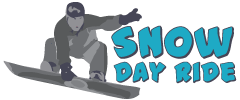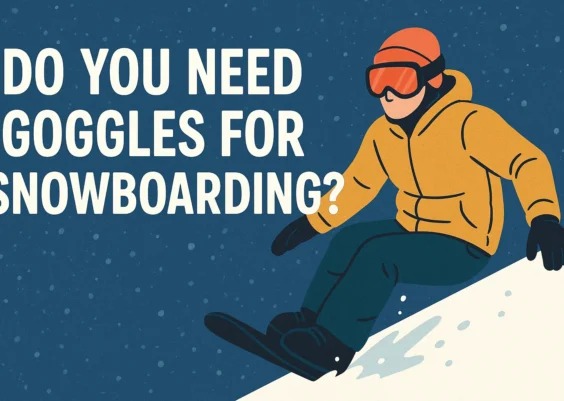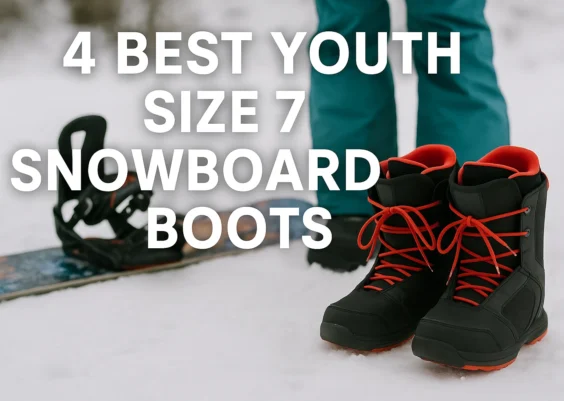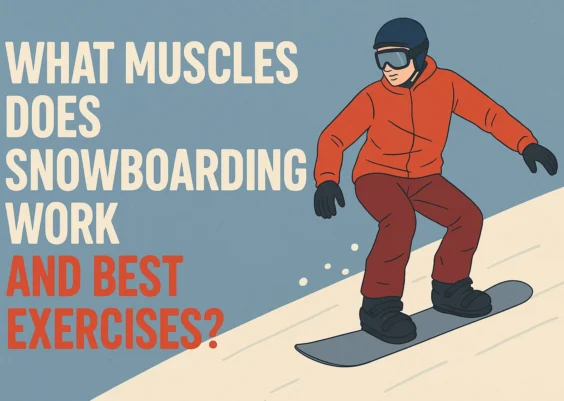Key Points
- Snowboard boots lock into bindings
- Regular boots slip and lose control
- Fit and flex shape your ride
- Rent first, then buy with confidence
Do you need special boots for snowboarding? If you want control, safety, and a better day on the mountain, yes, you need. Snowboard boots match bindings, support your ankles, and translate movement to the board.
Regular winter boots feel warm, but they move and twist in ways that break control. That gap shows up fast on hard snow and uneven terrain. The full story goes deeper, though. Flex, fit, and lacing all change how you ride.
Keep reading and you will know which boots fit your style, how tight they should be, and whether you should rent or buy.
Why Do You Need Special Boots for Snowboarding?
Snowboard boots are built for one job. They connect your feet to your bindings and turn your intent into edge control. The outsole is flat and grippy for binding contact. The cuff supports your ankle so your heel stays planted. The liner wraps the foot and can heat-mold for shape. Regular boots lack these parts, so they twist, slip, and lift at the heel.
Most snowboard boots use a flex scale from 1 to 10. Softer boots sit around 3 to 5 and feel forgiving. Medium boots land near 5 to 7 for all-mountain use. Stiff boots run 7 to 10 for fast carving and steep lines. Regular boots have no true flex rating and fold under edge pressure.
Bindings are another link. Straps and highbacks expect a snowboard boot’s shape and outsole. A hiking or snow boot sits wrong in the tray and shifts under load. That extra play delays turns and spikes falls. A matched boot and binding feel like one piece. That unity builds trust, which helps you progress.
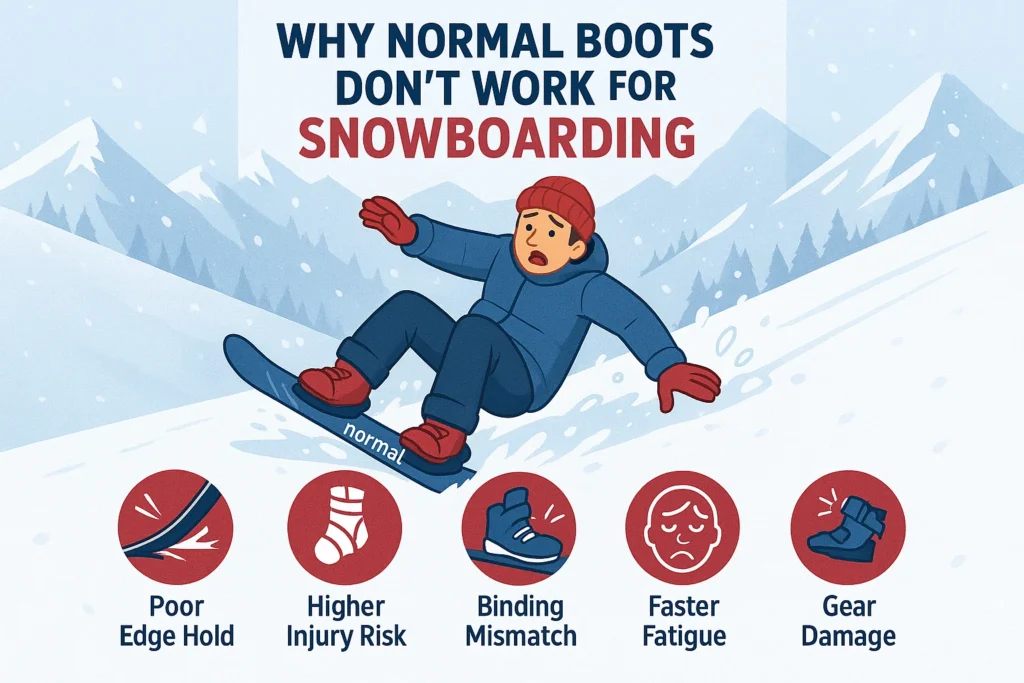
Risks of Using Normal Boots
- Poor edge hold. Heel lift and soft cuffs delay pressure on the edge. Turns wash out on hardpack.
- Higher injury risk. Weak ankle support raises sprain risk during catches and landings.
- Binding mismatch. Outsole shape slips in straps and can pop loose under torque.
- Faster fatigue. Your lower legs work harder to control wobble and twist.
- Gear damage. Misfit soles chew straps and pads faster than normal use.
You can ride down a short hill in regular boots. You will fight the board the whole way and pick up bad habits. The cost shows up in crashes, sore ankles, and slow progress.
Difference Between Snowboard Boots and Ski Boots

Ski boots face forward and lock into toe and heel pieces. Snowboard boots face sideways and strap into bindings with highbacks. Ski boots are rigid plastic shells with a different stance and release system. They will not work on a snowboard.
Can Hiking or Winter Boots Work?
They keep feet warm and dry, but they lack ankle hold and the right outsole. The midsole bends at odd points and the heel lifts under pressure. That movement turns simple turns into slides and slips. Use proper snowboard boots.
Should I Rent or Buy Snowboard Boots?
Rent if you ride a few days a season or you are new. You can test sizes, flex levels, and lacing systems without a big spend.
Buy if you ride five or more days a season or want better fit and hygiene. Expect common price ranges from about $150 to $400. A good fit pays for itself in comfort and control.
Soft vs Hard Snowboard Boots: Which Is Comfortable?
- Soft boots (flex 3–6): park, beginners, all-mountain cruising. Forgiving and comfortable.
- Stiff boots (flex 7–10): carving, freeride, steeps. Precise and stable at speed.
Match boot flex with board and binding flex so the setup feels balanced.
Different Types of Snowboard Boots’ Lacing Systems
- Traditional laces: simple, cheap, easy to replace, precise tension.
- Speed laces: quick on and off, separate zones.
- BOA dials: fast and glove-friendly, single or dual zone options.
Pick the system you will tighten often. Good tension beats loose comfort.
How To Choose The Best Snowboarding Boots?
- Define your riding style.
Your style sets the tone for flex choice. Beginners and park riders need soft to medium boots that forgive mistakes and allow playful moves. All-mountain riders sit best with medium flex because it balances comfort and response.
Riders who carve hard, chase speed, or ride steep terrain need stiff boots for precision and stability. Pick flex based on how and where you ride most.
- Measure your size the right way.
Boot sizing is not the same as sneakers. Snowboard boots often use mondo size, which measures foot length in centimeters. Use a shop device or measure your foot against a wall.
Start with your street shoe size, then try half sizes up or down until you get a snug fit without pain. A proper fit saves you from heel lift and sore toes later.
- Test heel hold.
Heel hold is key for control. Lace or tighten the boot, then lean forward and roll side to side. If your heel lifts more than a few millimeters, the boot is too loose.
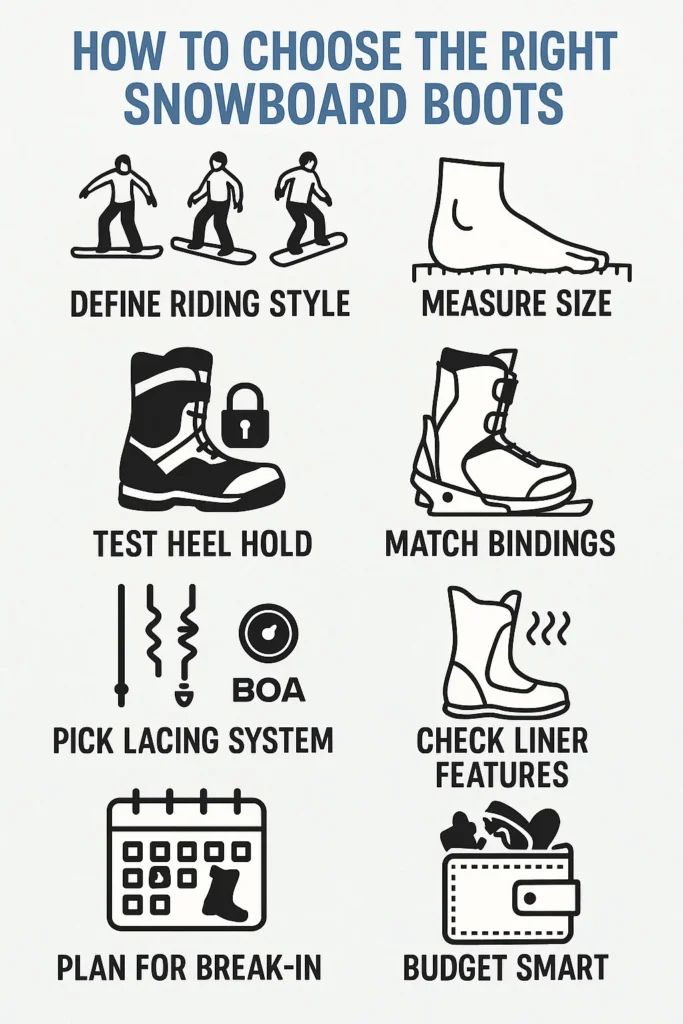
Try models with different liner shapes or ankle pads called J-bars. A boot that locks your heel lets every movement transfer straight to the board.
- Match boot to bindings.
Bindings are made for snowboard boots, not just any footwear. Check the size chart from the brand so your boot sits centered in the tray. If the toe or heel hangs too far, you risk drag.
Place the boot in the binding and strap it down. It should sit flush without gaps, and the highback should touch the boot spine. That match keeps the whole setup responsive.
- Pick a lacing system you will use.
Laces matter more than you think. Traditional laces give precise tension, but they take longer to tie. Speed laces use quick pulls and split zones, which help if you want different tightness in the foot and shin.
BOA dials twist tight with gloves on, which is great in the cold, but repairs can cost more. Choose the system you will actually tighten every run, because loose boots ruin control.
- Check liner features.
Liners make boots warmer and more supportive. Heat-moldable liners form to your foot in minutes and cut break-in time. Extra ankle pads or C-shaped foams stop heel lift.
Removable footbeds let you swap in custom orthotics if you need arch support. Spend a few minutes reading the liner specs. Small features can mean big comfort on long days.
- Plan for break-in.
New boots feel snug, but that is normal. Liners pack out about half a size after three to five days of riding. If you buy boots that feel roomy in the shop, they will be sloppy on snow within a week.
Aim for a fit that feels close and firm at first. That snug start turns into perfect comfort once the liner softens.
- Budget smart.
Prices range from about $150 for entry-level boots to $400+ for advanced models. Do not pick only by price. A mid-range boot that fits your foot will perform better than a top-tier model that slips.
If money is tight, start with rentals or watch for sales at the end of the season. Comfort and fit always beat brand hype.
FAQs
Can I snowboard one day in normal boots?
You can slide, but control will be poor and risk goes up. The boot will twist, your heel will lift, and bindings will not hold the same. Expect sore ankles and more falls. A rental shop solves this fast with proper boots.
How tight should snowboard boots feel?
Snug, not painful. Toes should touch when standing tall, then pull back when you bend your knees. Heels must stay planted with strong lacing. After two to five days, liners pack in and pressure points fade.
Do snowboard boots fit all bindings?
Most brands play well together. Size still matters. Check the binding size chart and test the boot in the tray. Straps should wrap clean, and the highback should match the boot’s spine without gaps.
Are used snowboard boots okay?
Yes, if the liner still has life and the outsole is not crushed. Check for packed-out liners, broken laces, and loose BOA parts. Wear them 10–15 minutes to spot hot spots before you buy.
What socks should I wear with snowboard boots?
Thin, tall snowboard socks made from wool or a blend. Thin socks reduce bunching and let the liner do its job. Avoid thick hiking socks. They create folds and pressure points.
How long do snowboard boots last?
Many riders get 60 to 100 days on a pair. Heavier riders or hard chargers may see faster wear. Watch for packed liners, cracked outsoles, and failing laces or dials. Replace when heel hold fades.
Do I need heat-molding?
It helps, but it is not required. Heat-molding speeds the break-in and can fix small hot spots. If the shell shape is wrong for your foot, molding will not fix that. Try a different model.
Do you need special boots for snowboarding? For real progress and fewer falls, yes. Proper boots lock into bindings, hold your heel, and turn small moves into clean edges. That control builds skill and cuts fatigue. Start with a clear plan, test a few fits, and pick a flex that matches your style. Rent to learn, then buy with confidence. A good pair turns shaky runs into solid turns and sets you up for a better season.
